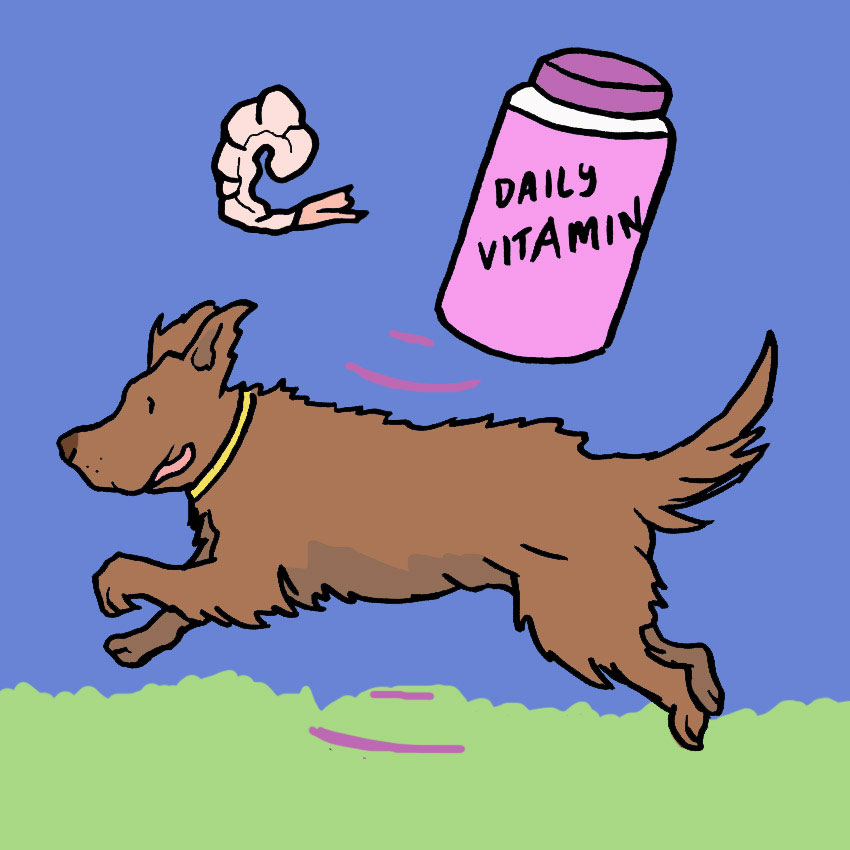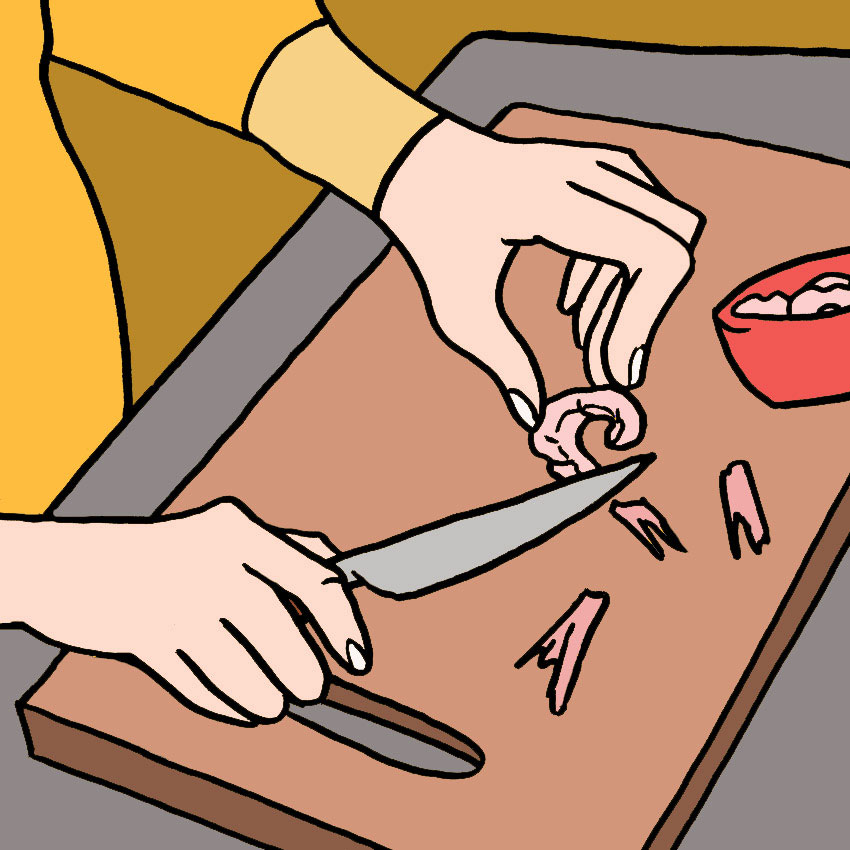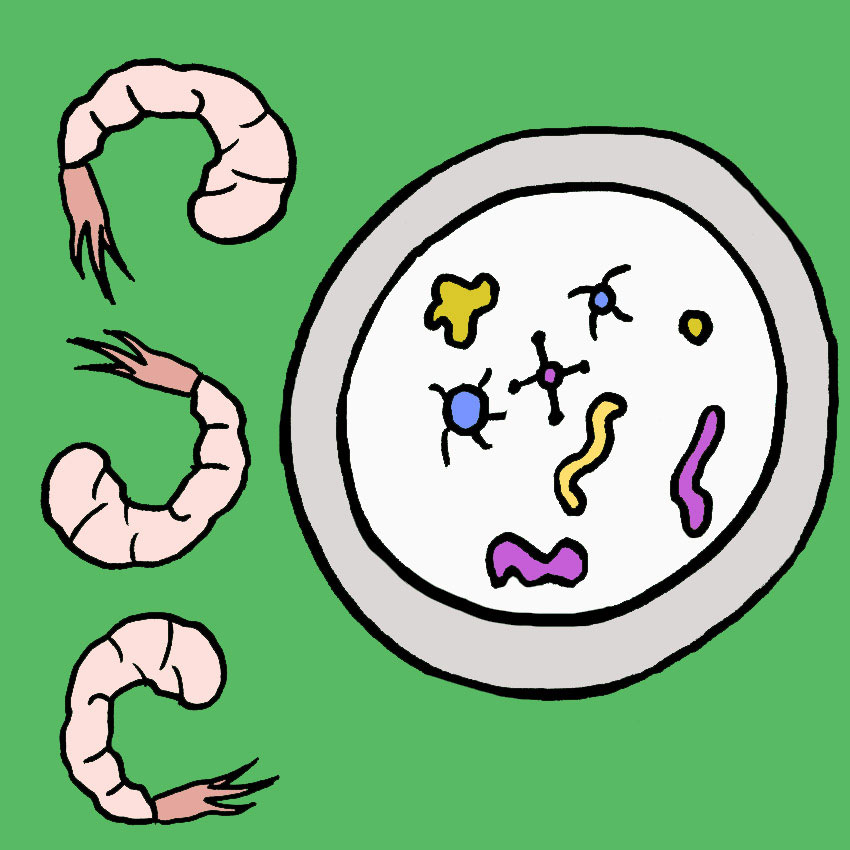Growing up, summertime for me meant copious amounts of freshly caught fish, crabs, scallops, and especially shrimp. I love shrimp. Whether it's grilled, fried, steamed and dipped in tangy cocktail sauce, tossed in creamy Alfredo sauce, or served over fettucine — I can safely say that shrimp is one of my very favorite foods.
If you’re like me, then sharing the food you love with the people (and pets) you love is one of your favorite things to do. So, naturally, while sitting down to a delicious dinner of shrimp and grits with my best dog pal, I started to serve him up some of my dinner. We share everything, after all.
But the shrimp gave me pause. Can dogs eat shrimp? Is shrimp good for dogs? Some of the tails were still on my shrimp. Can dogs eat shrimp tails? These questions definitely made me anxious, so I decided to research the facts about whether dogs can eat shrimp or not.
Can Dogs Eat Shrimp?

Yes, dogs can eat shrimp — but only if it's cooked. Shrimp can be a delicious treat for your dog, but it is important to understand how to prepare it before letting him eat it.
Is Shrimp Good For Dogs?

Shrimp is also one of those foods that some dogs may enjoy and others may turn their snouts up at in favor of more traditional treats. When first introducing shrimp to your dog, you want to do so very gradually. This way, you can watch them for signs of gastrointestinal upset like vomiting or diarrhea, which may happen if the shrimp does not agree with them.
Veterinarian Christie Long, with Petcoach.co, says that most dogs tolerate shrimp just fine, yet it is always a good idea to start them with a small amount, and observe how they do with it before feeding them more.
Nutrients In Shrimp That Are Good For Dogs
Shrimp does contain some nutrients that are beneficial for dogs, such as vitamin B12, niacin, and phosphorus, according to the American Kennel Club. Vitamin B12 is important for gastrointestinal health and metabolic processes. Niacin helps your dog produce energy and contributes to a healthy nervous system, among other things. Phosphorus is good for bone growth, and especially important for young puppies who are growing rapidly.
Shrimp is also low in fat, calories, and carbohydrates, making it a relatively nice choice for a doggy snack. However, it is also very high in cholesterol, which is something to look out for if your dog has ever had any health complications.
Can Dogs Eat Fried Shrimp?

There is no question: If something is delicious, it is even more delicious when it is fried. It's an unwritten law. It is also a law that frying something makes it far less healthy than it would have been if prepared another way.
So, the answer is yes, your dog can eat fried shrimp, but we would not recommend it. Webmd.com explains how giving them excess sodium can lead to vomiting and other adverse side effects — so feeding them anything with added salt is always a risk.
Can Dogs Eat Shrimp Shells?

Dogs should not eat shrimp shells or tails because they can get caught in their throats, teeth, or even their intestinal tract. Smart Dog Owners recommends completely removing the shells, tail, and veins of the shrimp to make it easier for them to eat and digest.
Why Can’t Dogs Eat Raw Shrimp?

Raw shrimp is very bad for dogs because it contains tons of bacteria that can be toxic. Even sushi-grade shrimp should not be fed to dogs raw. The American Kennel Club advises to steam shrimp throughly to avoid letting any of those harmful toxins or pathogens inside your pet.
How Should You Feed Shrimp To Your Dog?

As specified earlier, the AKC says best way to feed your dog shrimp is to steam it up, peel it, remove the tail, and de-vein it. After this, cut it up into smaller chunks before you feed it to your best pup pal. If you want to get fancy with it, you can squeeze a little lemon juice over the shrimp before you give it to them — it'll sneak some citric acid into their diet, which has flea-repellant properties and is delicious! Don't forget to feed it to them in moderation — all foods that are new to dogs should be fed in small bits.
If you enjoyed this article (and your dog benefited from it too), remember to SHARE it with a few friends who may like it as well!




